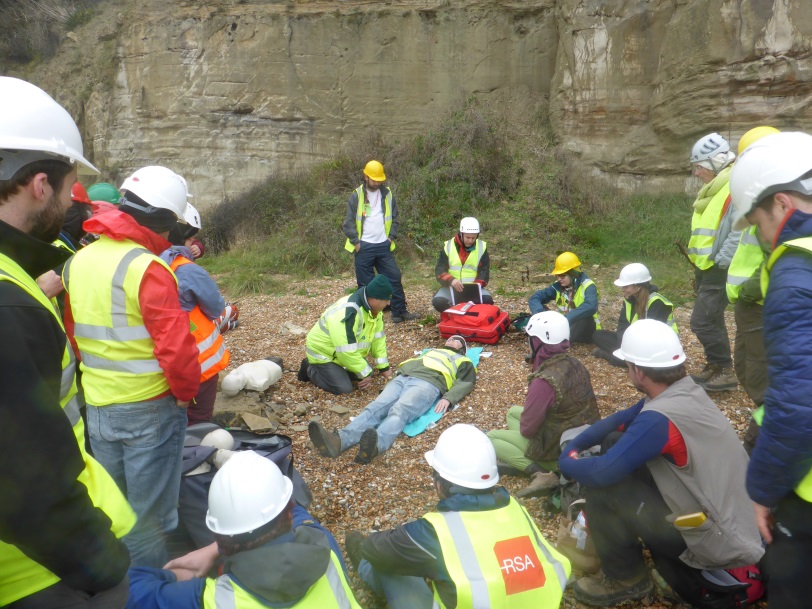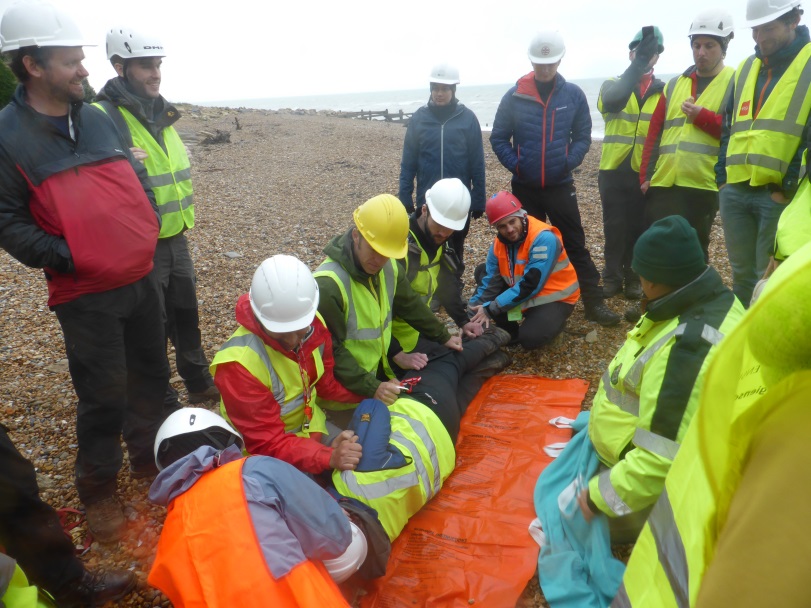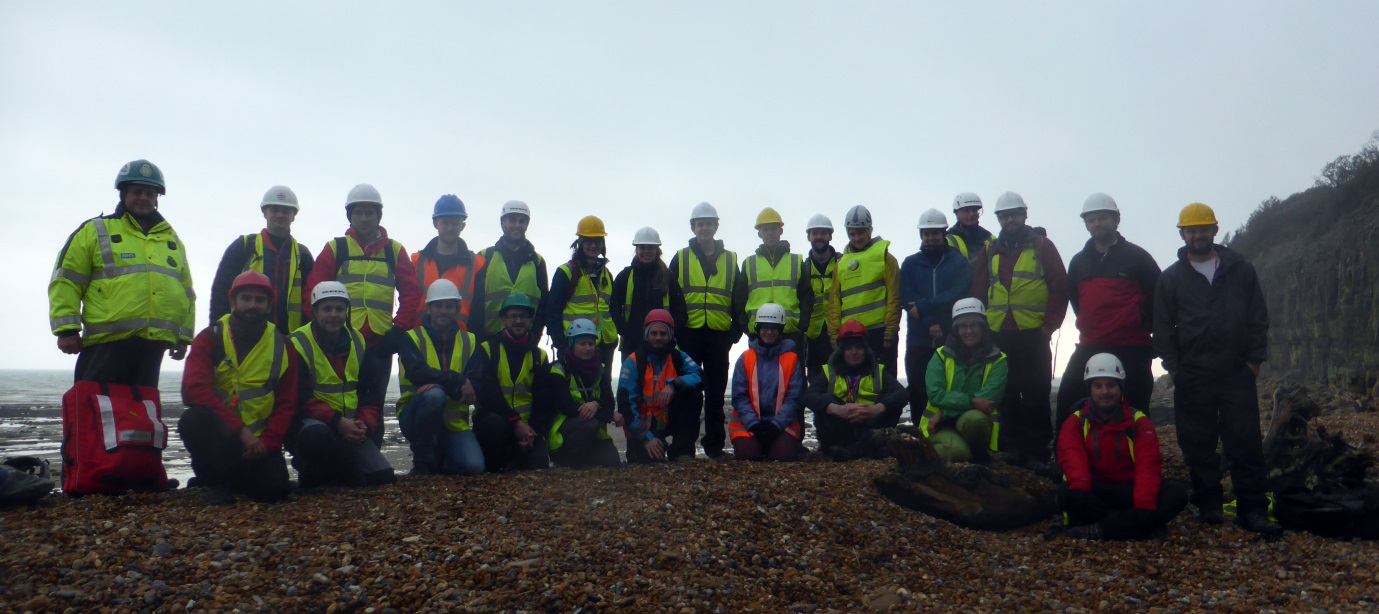BSRG Field Safety Leadership Course, Eastbourne (7-9th November 2015)
This year, after the very successful BSRG Ichnofabric Workshop in September, BSRG also organised a Field Safety Leadership Course, which was run and sponsored by ExxonMobil. The course was held over the weekend of the 7-9th of November in Eastbourne and was the first time the course had been run externally by ExxonMobil in the UK. The course was designed to help participants learn how to safely plan for, and manage, a large group in the field, and deal with any incidents that may occur. Our group consisted of geologist from various backgrounds and levels of experience, including university lecturers, industry professionals and PhD students.
Things kicked off on Friday night with group discussions (over tea, coffee, and beer!), of various field safety scenarios, often drawing on real life case-studies. We were asked to discuss and decide a course of action within small groups before feeding back our thoughts and decisions to the whole group, which generated some useful and constructive discussions.
On Saturday we braved some bracing English Channel showers to work on field risk assessment of various common outcrop sites such as cliff tops, cliff overhangs, roadside sections and beach/shore sections. We also worked on gathering relevant site information such as grid position, access points, and emergency evacuation routes. The point of these exercises was to collate information which would be vital to have immediately at hand in the event of an emergency.
Sunday focused more on managing and moving groups in the field and responding to a (simulated) incident. We were joined by an NHS paramedic who taught us how to initially assess and report a casualty in the field, how to deduce the extent of injuries, and then perform initial treatment. We were refreshed on the recovery position by taking it in turns to lie on the shingle beach and be responder and casualty. We also practiced CPR and learnt how to safely roll and lift casualties with suspected neck injuries. Finally, after quite an intense morning, we were drilled on an emergency response. One of our leaders put in an Oscar-winning performance as a victim of head and leg trauma (with some impressive make-up!) and the group’s response was observed. Afterwards we talked through what we thought worked, and what hadn’t, with a view to revising our emergency response plan.
The course taught us to really assess our surroundings and proved to be invaluable to all taking part. A refresh on first aid with a professional to hand was brilliant, especially with the addition of having this refresher in a locality similar to those where many of us frequently work.
Many thanks to James Maynard and Chris Thomas of ExxonMobil for leading the field course and to ExxonMobil for their sponsorship. Thanks for all the enthusiasm shown by those who attended, we hope to see you all again in December at the BSRG AGM. Part of this text is adapted from a blog post by Matthew Warke (University of Manchester).
Marco Patacci (University of Leeds), BSRG webmaster and Leah Nolan (Leicester University), BSRG Postgraduate Representative.

Site risk assessment exercise.

Assessing a casualty.

Log-roll of a casualty with a suspected neck injury.

Treating the (simulated!) casuality.

Group photo.


